Setagaya Ward, one of Tokyo’s 23 wards, beckons with its vibrant tapestry of neighborhoods. Explore bustling Shimokitazawa, a haven for vintage stores and trendy cafes, or unwind in Seijo, known for its upscale residential streets. History buffs will appreciate the Seikado Bunko Art Museum, while nature lovers can find solace in Komazawa Olympic Park. This diverse ward offers something for everyone.
Dive deeper into Setagaya with our ultimate area guide! We’ll uncover hidden spots, explore must-see sights, and guide you to the perfect place to stay. Get ready to discover the unique charm of Setagaya Ward!
A Quick Primer to Setagaya Ward

Boasting the largest population of Tokyo’s 23 wards (approximately 910,000), Setagaya Ward is a substantial suburban residential area that surpasses even some prefectures in size. Until recently, it was the largest ward by area, surpassed only when Ota Ward expanded to include Haneda Airport’s island. Much like Meguro-ku and Nakano, Setagaya-ku was merely a farming village on the outskirts of Edo. Incorporated into Tokyo City in 1932 with a population of about 133,000, its population skyrocketed to around 800,000 during the high economic growth period and continues to grow.
Development along the Odakyu and Tokyu Denentoshi lines post-World War II saw rapid construction from detached houses to city-owned housing complexes. Old farm roads were transformed into daily-use roads, and in some areas, the road infrastructure struggled to keep pace. The sluggish development of the Outer Ring Road has led to severe congestion on major arteries like Kanpachi-dori.
Despite this, Setagaya Ward retains an image as an “excellent residential area,” a perception perpetuated by the mass media, attracting many Setagaya fundamentalists or Setagaya-ism followers who believe it to be the supreme residential area. The average annual income of residents is ¥5.06 million, ranking seventh among the 23 wards—not as affluent as one might expect, given the diverse range of neighbourhoods from upscale residential areas to zones with metropolitan housing.
Living in Setagaya Ward

The name “Setagaya-ku” itself has evolved into a brand, reminiscent of the image of “the place where the average Japanese middle-class family lives,” a concept from over half a century ago during the high economic growth period. Many residents are proud to live in Setagaya Ward and would never consider leaving.
In recent years, however, the demographic of new residents has shifted slightly, influenced by media portrayals. The redevelopment of the Futakotamagawa area has brought about a chic mall with the high-profile store Tsutaya Denki as a core tenant, drawing even more people to the already bustling Denentoshi Line. This, along with Tokyu’s branding strategies, has led to an influx of people from rural areas who do not understand the value of land and end up paying exorbitant rents for properties along the Tama River and former agricultural land, which are not significantly more expensive than the land itself.
Areas like Seijo, Seta, Fukazawa, and parts of Daizawa are truly upscale, out of reach for the average person, while neighbouring marginal settlements in the heart of Tokyo, such as Shimoma Apartments, house lower-income residents.
History of Setagaya Ward

Framed by the Kokubunji cliff line along the Tama River in the southwest, the terrain of Setagaya Ward is a plateau to the east and a lowland to the west. It is one of the most densely populated areas in Tokyo, with archaeological findings across the ward indicating a well-established presence from ancient times.
When Ieyasu Tokugawa took over the Kanto region and set up the Edo shogunate, most villages in Setagaya came under his direct control. The demand for gravel surged post the Sino-Japanese War, leading to the construction of a railway to transport gravel from the Tama River. In 1907, the district’s first train, the Tamagawa Train, commenced operations.
From the Taisho Period to the early Showa Period, lines like Keio, Odakyu, Oimachi, and Inokashira were built. Following the Great Kanto Earthquake, the population near these railway lines rapidly increased, transforming the area into a residential zone. In 1932, two towns and two villages amalgamated to form Setagaya Ward, and in 1936, Chitose and Kinuta villages from Kita-Tama County were incorporated into the ward.
Areas of Setagaya City Ward
Along the Tokyu Denentoshi Line
Ikejiri-Ohashi 池尻大橋

The station’s name, a fusion of Ikejiri in Setagaya-ku and Ohashi in Meguro-ku, reflects the area’s heritage. The Mishuku Camp of the Japan Ground Self-Defense Force stands as a reminder of the prewar Komazawa Military Training Camp. The abundance of cafes and restaurants on Mishuku Street near Setagaya Park exudes the essence of modern Setagaya residents.
Sangenjaya 三軒茶屋

As the first stop on the Tokyu Setagaya Line, this local streetcar line sets the tone for the area. The bustling shopping district, often described as the most vibrant in Setagaya Ward, sprawls in all directions. Known as the “Triangle Zone,” it houses a postwar dining district that emerged after the black market era. The area’s highlights include the statue of the goddess Teruko at Taishido and the Civil Defense Setagaya Korean House, a century-old former military training camp building, adding to the district’s unique charm.
Komazawa Daigaku 駒沢大学
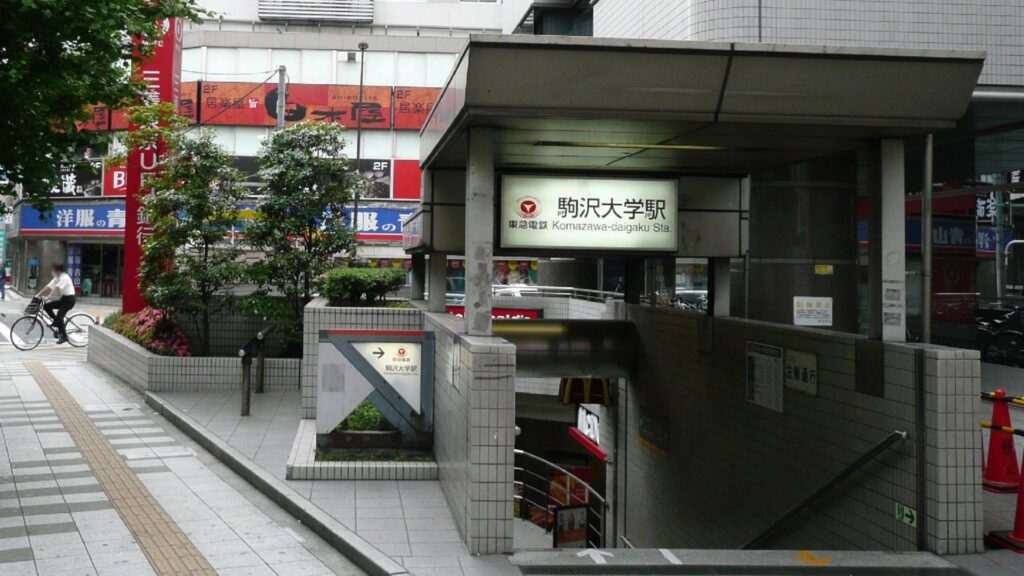
Residents of Setagaya Ward take pride in their high health consciousness, evident in the gatherings of families with dogs at Komazawa Olympic Park.
Sakurashinmachi 桜新町

Renowned for the Hasegawa Machiko Memorial Museum of Art, this area boasts modern twin water towers, visible only to residents of the neighbourhood, adding to its allure.
Yoga 用賀

Home to the headquarters of Setagaya Natural Foods, famous for its Setagaya-bred glucosamine, Yoga station attracts health-conscious elderly residents of Setagaya Ward. Kinuta Park and Setagaya Art Museum, pride of Setagaya Ward residents, line the Kanpachi Expressway.
Futakotamagawa 二子玉川

Futakotamagawa Rise, a popular hangout for families, epitomises the sophisticated riverside living synonymous with Setagaya Ward. The Tamagawa Takashimaya Department Store, beloved by locals, anchors the area and contributes to the branding of the Tokyu Denentoshi Line.
Along the Odakyu Line
Tohokuzawa 東北沢

Situated near Shibuya Ward, Tohokuzawa boasts undeveloped surroundings reminiscent of Nakano’s charm. The legendary Ryochu-so boarding house, once located along the unimproved section of Inokashira-dori Avenue, has been demolished, marking a transition in the area’s landscape in Setagaya.
Shimokitazawa 下北沢

Along with Koenji, Shimokitazawa is a theatre and subculture district much appreciated by students and young people who have just moved to Tokyo. The Village Vanguard store is strangely spacious. The shopping district is a student town with only 20-somethings strolling around.
Perhaps because the Inokashira Line crosses through the area, the atmosphere is more fashionable than that of Koenji, and the residential areas in the vicinity are more upscale. The Odakyu Line station has gone underground, and redevelopment in front of the station is underway, adding to the evolving character of Setagaya.
Setagaya-Daita 世田谷代田

A neighbourhood on the western edge of Shimokitazawa. You can find the headquarters of Camel Coffee, which operates Kaldi Coffee Farm, an imported food store that looks like Kintaro candy in every town in Setagaya.
Umegaoka 梅ヶ丘

Hanegi Park, famous for its ume groves, is located here. The Masuzoe Institute of Political Economy, which serves as the home of former Tokyo Governor Yoichi Masuzoe, who resigned over allegations of mixing public and private affairs, is located in this part of Setagaya.
Gotokuji 豪徳寺

Gotokuji Temple, which is associated with the Hikone Clan, is located in this town. It is famous for its beckoning cat figurines. The shopping street in front of the station is one of the more modest among the many towns along the Odakyu Line in Setagaya. The Tokyu Setagaya Line intersects with the station.
Kyodo 経堂
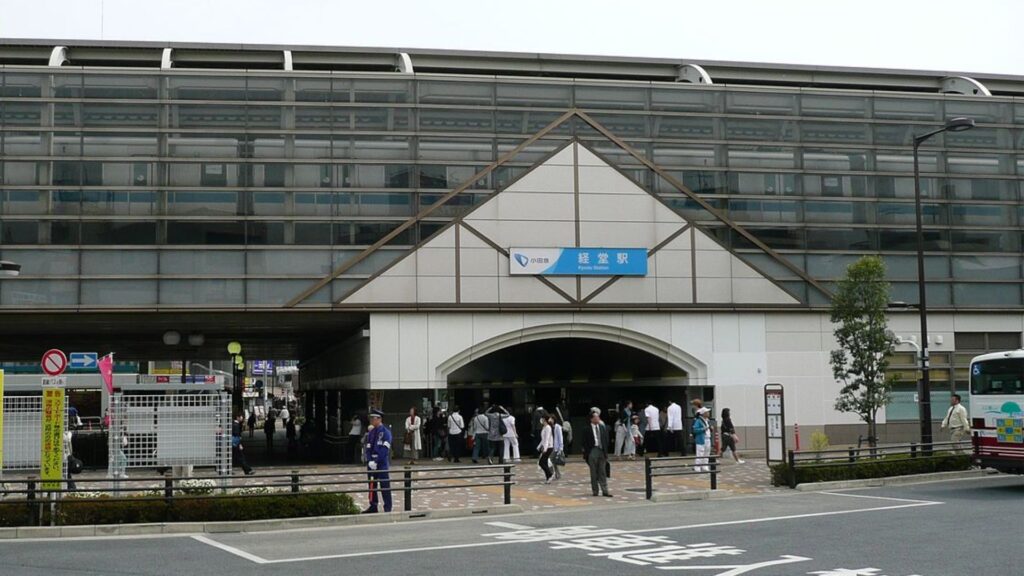
The closest station to the Tokyo University of Agriculture campus is a student town. The shopping street in front of the station is full of Chinese restaurants and set menus, but there are also restaurants specialising in pak choi cuisine and organic crepe shops. Ninety percent of the customers are girls, and elementary school students on their way home from tutoring school enjoy eating crepes that cost over 500 yen each, making it a unique spot in Setagaya.
Chitose Funabashi 千歳船橋

A town that could be mistaken for Funabashi in Chiba. The unusual architecture along Kampachi Street includes the M2 Building, designed by Kengo Kuma. It stands out as a distinctive landmark in Setagaya.
Soshigaya-Okura 祖師ヶ谷大蔵

The shopping area in front of the station is decorated in the Ultraman style, as the area is associated with Tsuburaya Productions. There is a black hot spring bathhouse as well as TV and movie production studios.
The National Center for Child Health and Development Hospital, a mecca for paediatric care, and the Okura Daibutsu Buddha are also famous, contributing to the cultural significance of Setagaya.
Seijogakuenmae 成城学園前

Seijo is one of the most exclusive residential areas in Setagaya Ward. The supermarket in front of the station is, of course, Seijo Ishii. The neat residential area on the north side of the station is the celebrity zone, further enhancing Setagaya’s reputation for affluence.
Along the Keio Line and Inokashira Line
Ikenoue 池ノ上
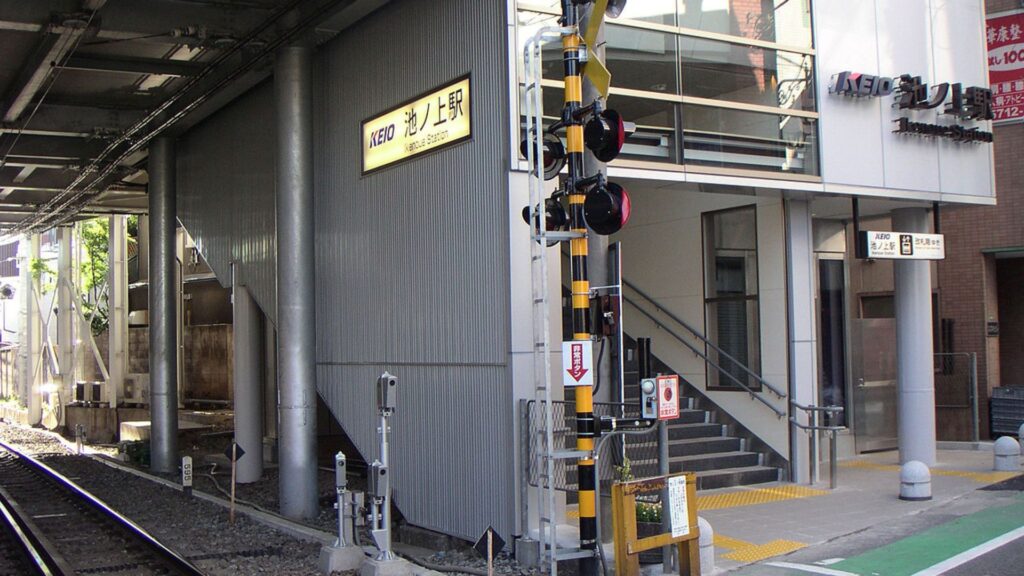
On the eastern edge of the Shimokitazawa area. The section of Metropolitan Road No. 420 in front of the station is extremely narrow, making it very difficult for cars to come and go. Some areas of Daizawa 2 and 3 Chome are seriously upscale residential areas, contributing to the diverse neighbourhoods in Setagaya.
Niyoda 新代田
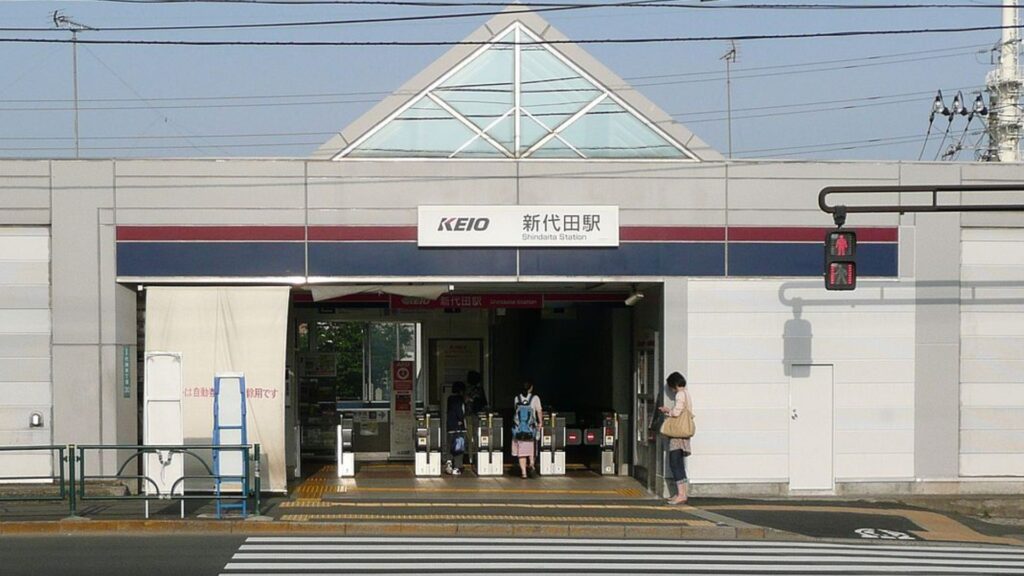
West edge of Shimokitazawa area. Kannana-dori in front of the station is a notable thoroughfare in Setagaya.
Higashimatsubara 東松原
Passing through the small shopping street in front of the station, you will find Hanegi Park, one of the most famous plum tree locations in Setagaya.
Daitabashi 代田橋
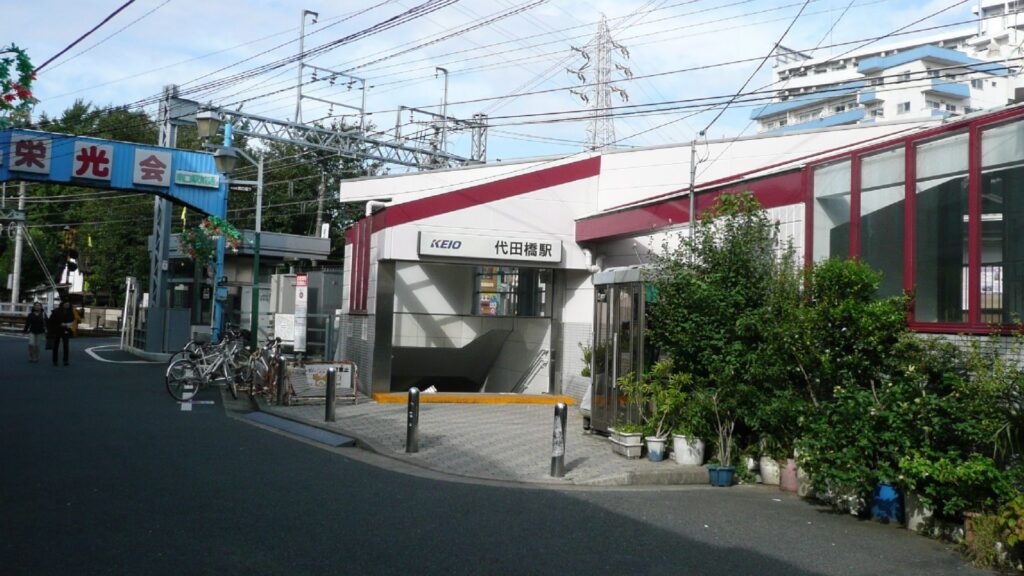
A shopping district in front of the station that is so downbeat and seedy that it is hard to believe it is in Setagaya Ward. This contrast adds to the eclectic character of Setagaya.
Meidaimae 明大前

As the station name suggests, this is a student town with Meiji University’s Izumi Campus. The shopping district in front of the station belongs to Setagaya Ward, but it is generally geared towards students and has little character. The station is a transfer station between the Keio Line and the Inokashira Line, so Keio users frequent the station, making it a busy hub in Setagaya.
Shimotakaido 下高井戸
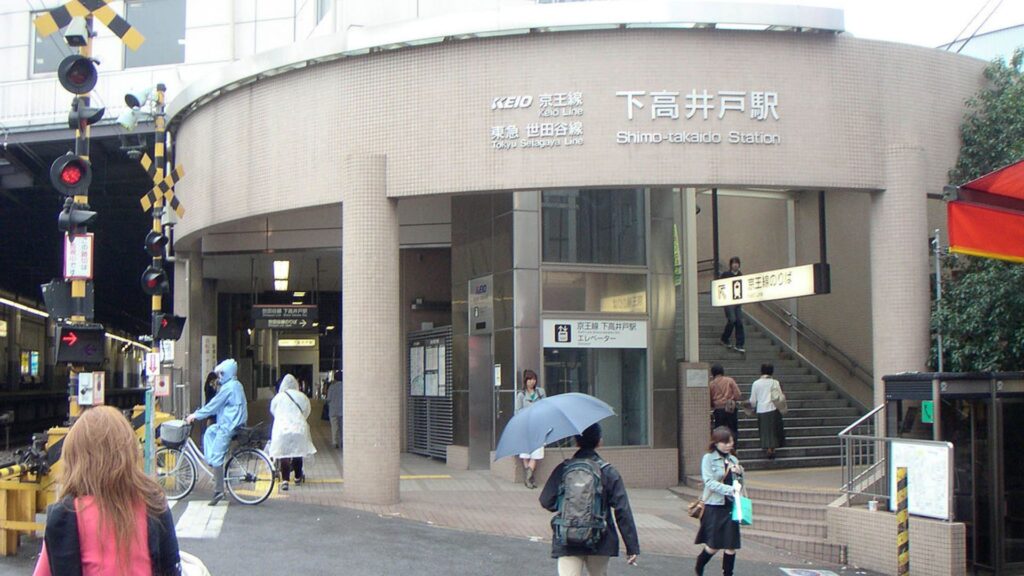
This station is the terminus of the Tokyu Setagaya Line tramway. In front of the station is a post-war market, and together with the crossing of the Keio Line, the scenery in front of the station is reminiscent of the Showa period, highlighting Setagaya’s historical depth
Sakurajosui 桜上水
A student town with the campus of the College of Liberal Arts and Sciences of Nihon University. The old and dirty store of “Aburamen,” a long-established abura soba shop, which can be seen from Koshu Kaido, is a landmark of the town. The taste is loved by students, making it a staple of Setagaya’s culinary scene.
Kamikitazawa 上北沢

Similar to Shimokitazawa, but a completely different location and atmosphere, contributing to the diverse urban tapestry of Setagaya.
Hachimanyama 八幡山

The nearest station to the Tokyo Metropolitan Matsuzawa Hospital, a mecca for psychiatric care. Along the Kanpachi Ring Road is the Shin-Ene Hachimanyama SS, a very inexpensive gas station that always appears on TV, adding to the practical amenities in Setagaya.
Roka-kōen 芦花公園

Roka Koshun-en Gardens is located along Kampachi, but it is quite far from the station. The Showa-era market “Marubi Store” on the north side of the station and the old-fashioned shopping street in front of the station are nice, capturing the nostalgic charm of Setagaya.
Chitose Karasuyama 千歳烏山
The most prosperous shopping area in Setagaya Ward on the Keio Line, highlighting the vibrant commercial life in Setagaya.
Sengawa 仙川
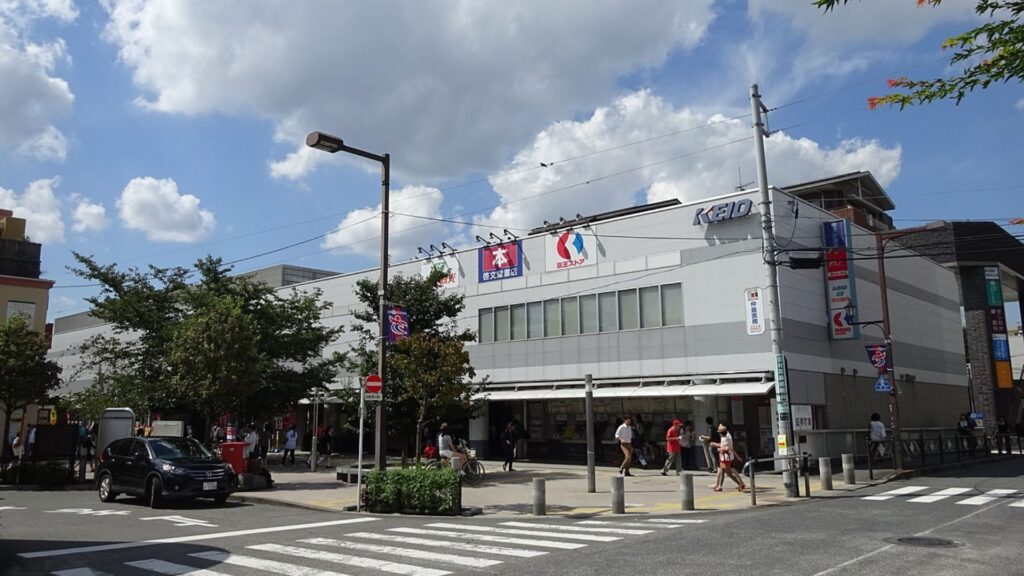
The station is located in front of Chofu City, but the nearest station is in Kyuta, Setagaya Ward, and some areas in Kamiososhigaya. This unique positioning adds to the geographic diversity of Setagaya.
Along the Tokyu Oimachi Line and Meguro Line
Uenoge 上野毛

Outside of the Nikotama area. It is also close to Futakotamagawa Park with Starbucks where conscious people gather. Easy to get to Yokohama from Kanpachi-dori to Daisan Keihin. Beware of bald-headed males living here, as they will be tossed about in various ways. There is hair (Uenoge) and hair (Shimonoge) on the Kawasaki City side, adding to the quirky local culture of Setagaya.
Todoroki 等々力
This town is known for Todoroki Valley Park, a great natural beauty on the outskirts of Setagaya. The daily scenery of madams with dogs strolling around is typical of Setagaya.
Oyamadai 尾山台

Among the stations on the Oimachi Line, the shopping area in front of the station is rather prosperous, reflecting the economic vitality of Setagaya.
Kuhonbutsu 九品仏

The western edge of the Jiyugaoka area. Jiyugaoka is a desirable place to live, but rent is expensive, so there are people who live one station away. The station platform is short, so you can see the famous door cut where a five-car train overhangs the platform and blocks the railroad crossing. Kuhonbutsu Josinji Temple, from which the station takes its name, adds to the spiritual and historical landscape of Setagaya.
Okusawa 奥沢

Okusawa, with its serene atmosphere, stands out in Setagaya as a peaceful residential area, further enriching the ward’s diverse living environment.
Things to Do in Setagaya Ward
Kinuta Park 都立砧公園
Kinuta Park was used as an air defence space during the war and as a metropolitan golf course after the war. With the concept of a park that can be enjoyed by the whole family, it features a family park, a baseball field, a football field, and other sports-related facilities. The park also has a store and the Setagaya Art Museum. Seasonal flowers can be seen year-round, and events such as the Tanabata Festival and bird-watching are also held.
Find out more about Kinuta Park here on Google maps.
Futako Tamagawa Rise Shopping Center 二子玉川ライズ・ショッピングセンター
Futako Tamagawa Rise is directly connected to Futako Tamagawa Station on the Tokyu Denentoshi Line and Oimachi Line. It is a major leisure facility that combines commercial establishments with many hotspots, popular restaurants, a cinema complex, a fitness club, a hotel, and even a park. The project was completed in 2015 as one of the largest private redevelopment projects in Tokyo.
The townscape leading to Futako Tamagawa Park is well landscaped and is a popular spot for many people to visit on weekends, with a full lineup of limited-time events and other activities. This complex epitomises the modern urban lifestyle in Setagaya.
Find out more about Futako Tamagawa Rise Shopping Center here on Google maps.
Gotokuji Temple 豪徳寺

Gotokuji Temple is a Soto sect temple located in Gotokuji 2-chome, Setagaya-ku, Tokyo. It was built in 1480 by Kira Masatada, lord of Setagaya Castle. The temple is also said to be the birthplace of beckoning cats, as there is an anecdote that Ii Naotaka, the second lord of the Hikone Domain, who later took Setagaya as his domain, escaped a thunderstorm by being beckoned into the temple by a cat. Many tourists visit the temple for the sight of the countless beckoning cats dedicated to the temple.
Find out more about Gotokuji Temple here on Google maps.
Setagaya Park 世田谷区立世田谷公園

Setagaya Park is an urban park located in Ikejiri, Setagaya Ward, and has sports facilities, a fountain plaza, a play park, and other amenities. On Saturdays and Sundays, a mini SL “Chibikuro-go” runs through the park, which is popular among families and people of all ages. An outdoor swimming pool can be enjoyed during the summer, adding to the recreational offerings of Setagaya.
Find out more about Setagaya Park here on Google maps.
Setagaya Museum 世田谷美術館
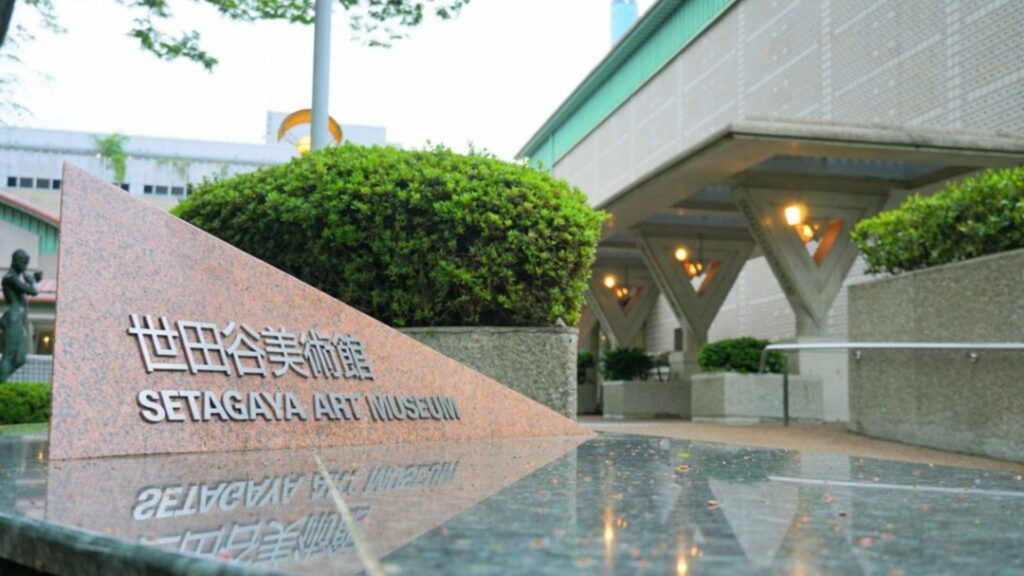
The museum is located in Kinuta Park in Setagaya Ward, Tokyo, and the building, which is integrated with the lush green landscape, was designed by architect Shozo Uchii. The museum’s collection consists of approximately 16,000 items, including Henri Rousseau’s “Portrait of Frumance Biche,” Kitaoji Rosanjin’s “The Year of the Fish,” and works by artists associated with Setagaya Ward.
In addition to themed collection exhibitions, the museum also holds special exhibitions in cooperation with museums in Japan and abroad. The French restaurant overlooking Kinuta Park is also popular.
Find out more about Setagaya Museum here on Google maps.
Honda Theatre 本多劇場
Located in Kitazawa, Setagaya-ku, Tokyo, this theatre was opened in 1982. It is the largest of the Honda Theatre Group’s small theatres scattered around the area, with 386 seats and full stage facilities. It has been a driving force in the small theatre culture of Shimokitazawa as well as Tokyo and is often used for performances by famous theatre companies. It is about a 2-minute walk from Shimokitazawa Station, making it a cultural hub in Setagaya.
Find out more about Honda Theatre here on Google maps.
Futakotamagawa Park 世田谷区立二子玉川公園

About a 2-minute walk from the Tamagawa High School bus stop or an 8-minute walk from Uenoge Station, the park is located along Tamatsutsumidori Street and offers a good view of the city. There are many attractions, from the entrance plaza and playground equipment to the former Shimizu Residence Shoin, which is designated as a tangible cultural property of Setagaya Ward, and Kishinen, a circular Japanese garden.
The park itself is open all year round, but please note that some facilities are closed on certain days of the week. Many events for children are also held here, enhancing the community spirit of Setagaya.
Find out more about Futakotamagawa Park here on Google maps.
The Gotoh Museum 五島美術館

The Gotoh Art Museum was established in 1960 as a private art museum (foundation). It comprises antiques collected by Keita Goto, former chairman of Tokyu Corporation, from the pre-war to post-war periods before the Meiji Era. The museum’s collection consists of approximately 5,000 items, including five national treasures and 50 important cultural properties, such as “The Tale of Genji Picture Scroll” and “Murasaki Shikibu Diary Picture Scroll.”
The museum also has a special collection of about 25,000 volumes, including three national treasures and 33 important cultural properties, making it one of the most widely used museums in Japan and abroad for various types of research in different fields. This contributes to Setagaya’s rich cultural landscape.
Find out more about Gotoh Museum here on Google maps.
Hanegi Park 世田谷区立羽根木公園

Hanegi Park is about a 5-minute walk from Umegaoka Station and a 7-minute walk from Higashimatsubara Station. The park is characterised by its ume (plum) grove, which was originally planted in 1967.
Commemorative tree plantings have been held many times, and today there are 650 ume trees of about 60 varieties. From early February to early March, when the ume trees are in full bloom, the park is crowded with tourists from all over Japan. There are also various facilities such as shops, tennis courts, a baseball field, and a children’s playground, making it a popular spot in Setagaya.
Find out more about Hanegi Park here on Google maps.
Todoroki Ravine Park 等々力渓谷公園

Todoroki Ravine Park is the only ravine in the 23 wards of Tokyo. It is an urban oasis conveniently located about a 5-minute walk from Todoroki Station on the Tokyu Oimachi Line and about 20 minutes from Shibuya.
From the signboard at the entrance of the ravine at the foot of the golf bridge, visitors can descend a flight of stairs to find a natural setting that makes it hard to believe they are in the city. They can see a variety of seasonal colours: plum blossoms in February, cherry blossoms in April, fresh greenery in May, and yellow maple trees in autumn. In addition to the natural beauty of the valley, there are also famous landmarks such as an ancient burial mound, a Japanese garden, and the Fudo Falls, which attract many visitors regardless of the season, adding to the natural allure of Setagaya.
Find out more about Todoroki Ravine Park here on Google maps.
Setagaya Hachimangu Shrine 世田谷八幡宮
Located in Miyasaka 1-chome, Setagaya-ku, this shrine was built in 1091 by Minamoto no Yoshiie, who stayed in the area on his way back from the “Later Three Years’ War,” and enshrined the spirits of Usa Hachiman Shrine in Buzen (present-day Oita Prefecture). The shrine enshrines Emperor Eishin, Emperor Nakai, and Empress Jingu as its deities.
The shrine also has a history of dedication sumo tournaments during the Edo period (1603-1867) and is known as the shrine of the “Three Great Sumo Tournaments in the Suburbs of Edo.” This makes it a significant historical site in Setagaya.
Find out more about Setagaya Hachimangu Shrine here on Google maps.
Jōshinji Temple 九品山 唯在念佛院 淨眞寺 (浄真寺)
Located in the heart of the city, Jōshinji Temple is a 5-minute walk from Kuhonbutsu Station and a 10-minute walk from Jiyugaoka Station. This temple of the Jodo sect features an authentic karesansui (dry landscape garden) that makes you feel as if you are in Kyoto. The “Kuhonbutsu” refers to the nine Amida Nyorai statues enshrined in the temple, but it is also the temple’s common name.
The temple was founded in 1678 and preserves tangible cultural assets such as a wooden seated statue of the Amida Nyorai, a statue of the priest Kaishaku Shonin in colour on silk, and a temple bell. The grounds of the temple, with its pond garden as opposed to a karesansui, are famous for their autumn foliage, which attracts many tourists every year during the season, making it a cultural treasure in Setagaya.
Find out more about Jōshinji Temple here on Google maps.
Snow Dome Museum
The Snow Dome Museum specialises in snow domes. The history of snow domes dates back to 1889 when they were popular at the Paris Exposition. The museum exhibits snow domes from antique to the latest, from the past to the present. The museum store sells snow globes, and various projects are held regularly, including on-site workshops. Visitors can also ask the museum to make original snow globes for weddings and other occasions, adding a unique aspect to Setagaya’s cultural offerings.
Find out more about Snow Dome Museum here on Google maps.
Recommended Accommodations in Setagaya Ward
Mustard Hotel Shimokitazawa (3 Stars)

Ideally located in the Setagaya district of Tokyo, MUSTARD HOTEL SHIMOKITAZAWA is 700 m from Tokyo Camii & Turkish Culture Centre, less than 1 km from Japan Folk Crafts Museum, and an 11-minute walk from Shinganji Temple. Popular points of interest near the hotel include Kitazawa Hachiman Shrine, Koga Masao Museum of Music, and the Museum of Modern Japanese Literature.
the b sangenjaya (3 Stars)

Located near the central Shibuya area, the b sangenjaya is a 2-minute walk from Sangenjaya Station, just 2 stops from Shibuya Station on the Tokyu Den-en-Toshi Line. The b sangenjaya is a 10-minute train ride from Meiji-Jingu Shrine and the Omotesando Hills shopping centre. It is 4 km from Harajuku Train Station and 15 km from Haneda Airport. Tokyo Skytree is a 30-minute train ride away, making it a convenient stay in Setagaya.
Tokyu Stay Yoga (3 Stars)

Right across from Yoga Station on the Tokyu Den-en-toshi Line, Tokyu Stay Yoga is a 12-minute train ride from Shibuya. Yoga Tokyu Stay is a 20-minute walk from Kinuta Park and the Setagaya Museum. From Yoga Station, it is a 15-minute train ride from Shibuya, about a 1-hour direct train ride to Yokohama, and about a 30-minute train ride from Shinjuku area, offering convenient access within Setagaya.
Onsen Ryokan Yuen Bettei Tokyo Daita (4 Stars)

Well set in the Setagaya district of Tokyo, Onsen Ryokan Yuen Bettei Tokyo Daita is located less than 1 km from Shinganji Temple, a 12-minute walk from Kitazawa Hachiman Shrine, and 1.4 km from Hanegi Park. Tokyo Holy Cross Church is 1.8 km from the ryokan, while Komabano Park is 2 km away. The nearest airport is Tokyo Haneda International Airport, 28 km from Onsen Ryokan Yuen Bettei Tokyo, providing a luxurious stay in Setagaya.
THE WARDROBE Hotel 下北沢 (2 Stars)

Well located in the Setagaya district of Tokyo, THE WARDROBE Hotel 下北沢 is located 700 m from Shinganji Temple, 700 m from Kitazawa Hachiman Shrine, and 1.6 km from Komabano Park. Attractions in the area include the Museum of Modern Japanese Literature, 2 km away, or Komaba Museum, set 2.1 km from the property. Popular points of interest near the accommodation include Hanegi Park, Koga Masao Museum of Music, and the Japan Folk Crafts Museum.
Kitazawa Cosy House
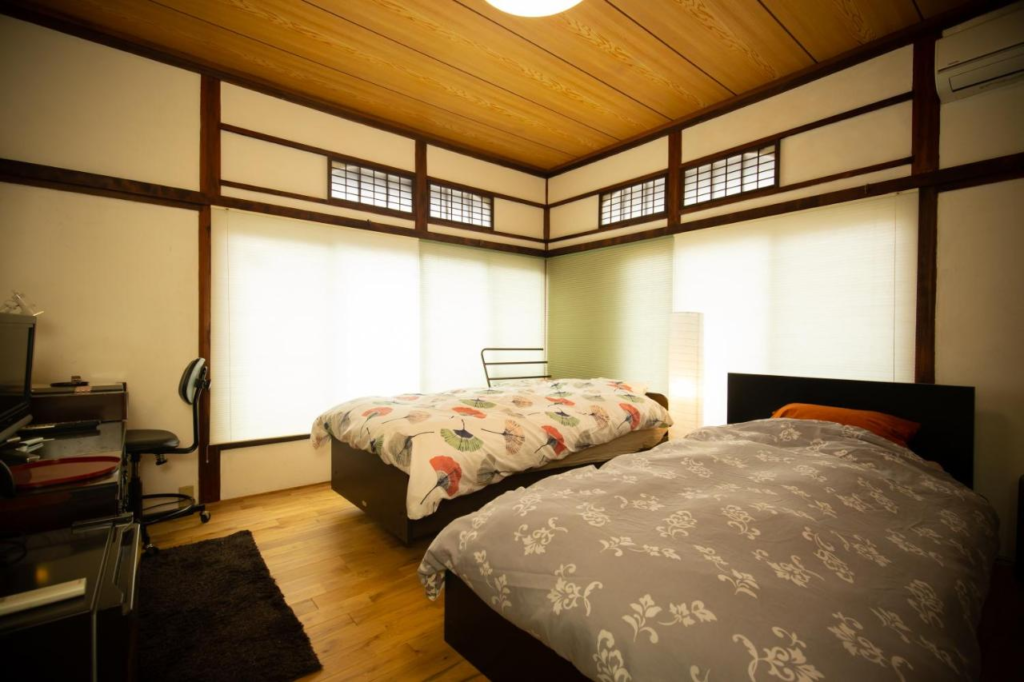
Attractively set in the Setagaya district of Tokyo, Kitazawa Cosy House is situated 600 m from Kitazawa Hachiman Shrine, 600 m from Shinganji Temple, and 700 m from Japan Folk Crafts Museum. This property is set a short distance from attractions such as Koga Masao Museum of Music, Komaba Museum, and Hanegi Park. Popular points of interest near Kitazawa Cosy House include Tokyo Camii & Turkish Culture Center, the Museum of Modern Japanese Literature, and Komabano Park.
Real Life Meguro River
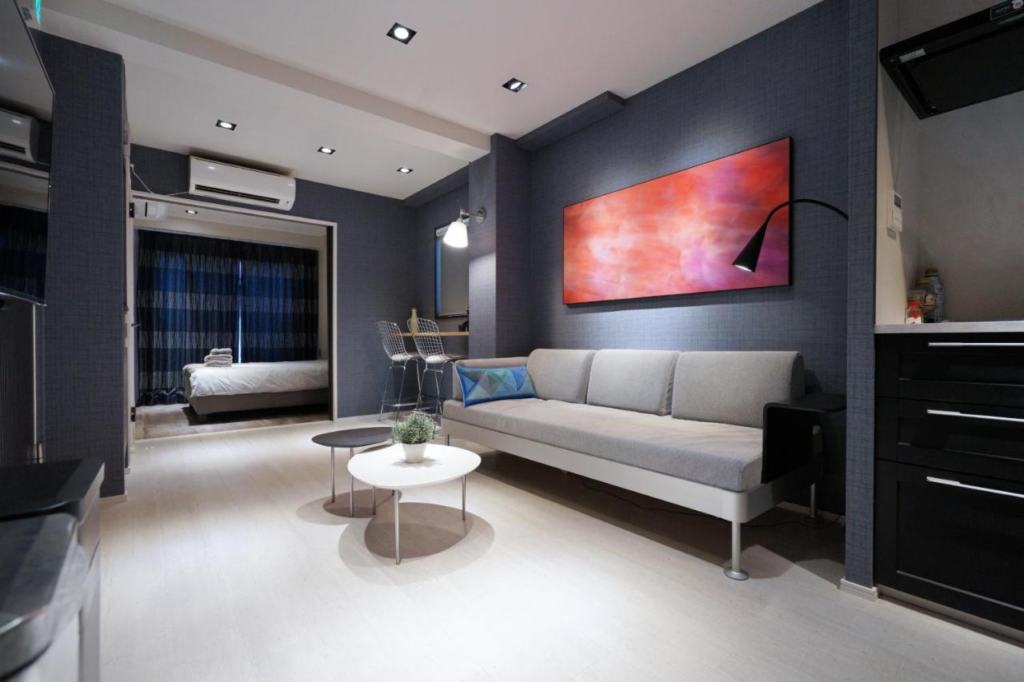
Conveniently set in the Setagaya district of Tokyo, Real Life Meguro River is located less than 1 km from Ikejiri Inari Shrine, a 13-minute walk from Higashiyama Kaizuka Park, and 1.1 km from Kamimeguro Hikawa Shrine. The property is close to several well-known attractions, including Setagaya Peace Museum, Showa Women’s University Hitomi Memorial Hall, and Showa Women’s University Koyo Museum. Popular points of interest near the accommodation include the Snow Dome Museum, Sugekari Park, and Setagaya Park.
Setagaya Ward Awaits Your Visit
What do you think about Setagaya Ward in Tokyo? Do you enjoy learning about the history and culture of this fascinating area? Setagaya Ward offers a rich tapestry of historical sites and cultural experiences that make it one of Tokyo’s most intriguing neighbourhoods. From ancient temples and beautiful parks to modern museums and bustling shopping centres, there is always something unique to explore in Setagaya.
If you’re planning to visit this vibrant part of Tokyo, make sure to refer back to this blog for detailed information and recommendations. Whether you’re interested in historical landmarks, cultural events, or just enjoying the local atmosphere, Setagaya Ward has something for everyone. Don’t miss the opportunity to discover all that this unique neighbourhood has to offer.


Trackbacks/Pingbacks